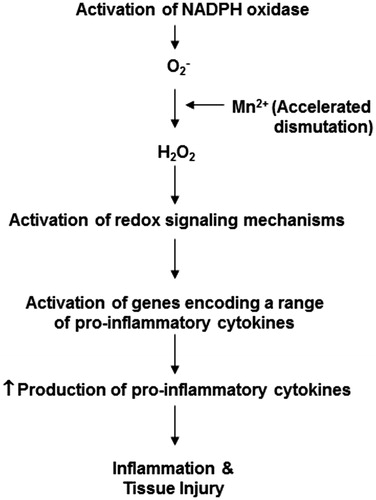Figures & data
Figure 1. Effects of MnCl2 on spontaneous and LPS-activated monocyte-derived macrophage IL-1β and IL-6 production. Results shown are mean ( ± SEM) pg/ml (n = 6). *p < 0.05 vs control (0). +p < 0.05 vs LPS-only control.
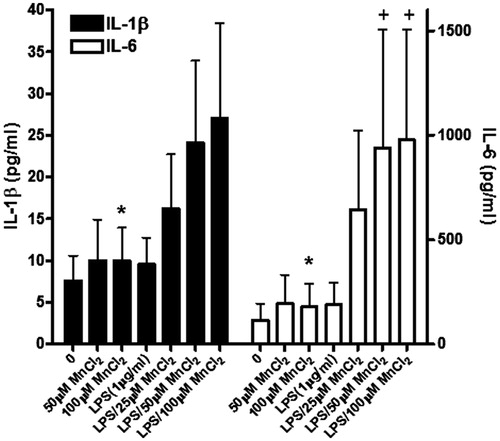
Figure 2. Effects of MnCl2 on spontaneous and LPS-activated monocyte-derived macrophage IL-8 and TNFα production. Results shown are mean ( ± SEM) pg/ml (n = 6). *p < 0.05 vs control (0). +p < 0.05 vs LPS-only control.

Figure 3. Effects of MnCl2 on spontaneous and LPS-activated monocyte-derived macrophage G-CSF and IFNγ production. Results shown are mean ( ± SEM) pg/ml (n = 6). *p < 0.05 vs control (0). +p < 0.05 vs LPS-only control.
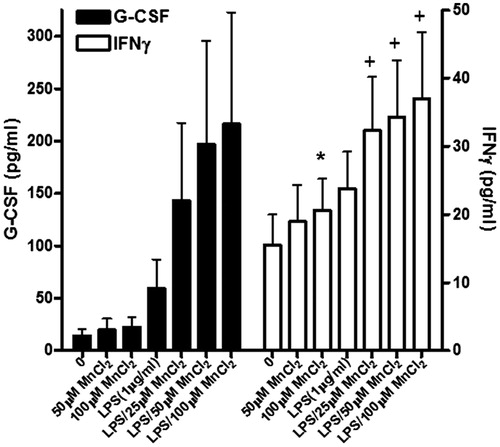
Figure 4. Effects of SB202190 (SB, 20 μM), NF-κB activation inhibitor (NF-κBi, 1 μM), or dithiothreitol (DTT, 5 mM) on Mn-mediated increases in monocyte-derived macrophage IL-6 and IL-8 production. Results are mean ( ± SEM) pg/ml (n = 5). *p < 0.05 vs LPS/MnCl2-treated (inhibitor-free) controls.
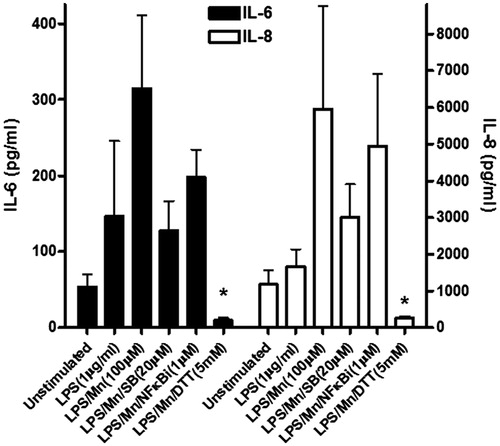
Figure 5. Effects of MnCl2 (at 100 μM) on unstimulated monocyte-derived macrophage dichlorofluorescein diacetate fluorescence responses. Traces from a single representative experiment (from n = 4–5) are shown. Experiments were performed in the absence/presence of NADPH oxidase inhibitor diphenyleneiodonium chloride (DPI, 20 μM) or the ROS scavenger dithiothreitol (DTT, 100 μM).
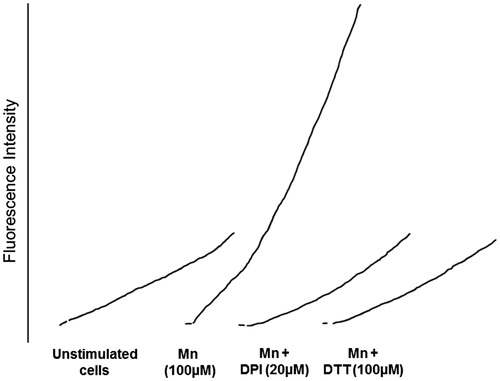
Figure 6. Summary of potential mechanisms by which manganese causes increased monocyte-derived macrophage pro-inflammatory cytokine production. Macrophage membrane-associated NADPH oxidase generates superoxide anions () that, in the presence of Mn2+ (a SOD mimetic), are converted to hydrogen peroxide (H2O2). H2O2 then acts as an intracellular messenger causing the activation of redox-sensitive signaling proteins and downstream transcription factors. This, in turn, leads to activation of genes encoding a range of pro-inflammatory cytokines, prolonged production of which may cause inflammation and tissue injury.
